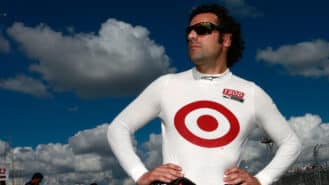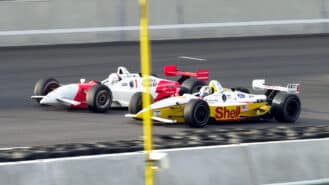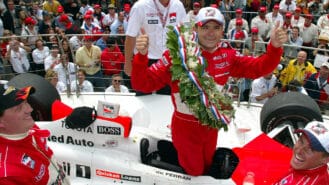A series taken from the 164-page Motor Sport special Great Racing Cars, which is available to buy here

Click here to buy the above image
From the editor Damien Smith
How would you define a ‘great’ racing car? Race wins and championship titles are an obvious place to start – and admittedly, when we began the process of rounding up the ‘voices’ to fill this special magazine, published by the team behind Motor Sport, we had in mind the likes of the Lotus 72, Ferrari F2004, Porsche 917, Audi R10 and so on.
But as the interviews of familiar racing figures began, we realised greatness is often a very personal thing. Naturally, most – but not all – would pick cars they had experienced first-hand, as a driver, designer, engineer or team boss. And on occasion the cars that stood out in their minds as ‘great’ weren’t necessarily so in the grand scheme of history. That’s why you’ll find a Minardi here among Formula 1 cars from Lotus, Williams and McLaren.
Unexpected? Certainly. Wrong? Not to the man who chose it.
As the interviews accumulated, our magazine took on a life of its own, full of personal anecdotes about the myriad cars that made careers. Some of those we spoke to, such as Mario Andretti and Dan Gurney, couldn’t be tied to a single choice from multi-faceted lives at the wheel. Such heroes have earned the right to choose an F1, sports and Indycar, so we allowed them more than one bite.
Others refused to be confined by category. Hence the short ‘Odd ’n Sods’ chapter on cars that, by and large, are mere footnotes in lower divisions of racing lore.
Thus there is nothing definitive about the selection listed herein. Then again, there’s no claim that this compilation offers the ‘Greatest Racing Cars’ of history. It’s much more personal than that, much more quirky – and all the better for it.

Roger Penske
Legendary US team owner
My favourite Indycar is our 1994 Penske-Mercedes-Benz we raced at Indianapolis with a 209 cubic inch, rocker arm Mercedes-Benz engine they called ‘The Beast’. Quietly, we took advantage of the stock-block rule for the Indy 500 which had been dominated by the Buick V6 turbo stock-block type engine running 55 inches of boost which was seven inches more than the standard, four-camshaft V8 racing engine most of us were using.
We saw we could build our own engine to those rules and we worked on it very quietly for a year and surprised everyone when we rolled out the engine for the start of practice for the Indy 500. We sat on the pole and dominated the race with our cars and won with Al Unser Jr and that engine. That was a great day for our team and company and it established my relationship with Mercedes-Benz like the Porsche 917/30 had done with Porsche.
Following that our dealership business with Mercedes-Benz expanded worldwide and I sold the Detroit Diesel engine manufacturing business to Mercedes.


From the archive: Andrew Frankel drives the Penske-Mercedes
This all-American racer was the final winning car built for the US team in Dorset. It wasn’t the most successful Penske, but its explosive acceleration still exhilarates
By Andrew Frankel
It takes time for certain cars to assume their place in history. Cars that achieve firsts are easy to recognise and remember, for their importance is clear to see from the moment they achieve their fame. But what about those that provide the other bookend, marking the last time its manufacturer achieved a certain kind of success? Those are much more difficult to spot, yet, in terms of their significance, perhaps no less important.

Take this gorgeous Mercedes-Benz-powered Penske PC26 as an example. When it was new in 1997 it was a well-engineered but, by Penske’s stratospheric standards, only reasonably successful Indycar. It started the season strongly, with Paul Tracy coming second at Homestead before winning at Nazareth, Rio de Janeiro and St Louis. But thereafter it faded, leaving Tracy a mere fifth in the championship and his team-mate, Al Unser Jr, way down in 13th spot. Hard to spot the significance, isn’t it? In fact this is not only the car that notched up Penske’s 99th victory when Tracy won at Gateway, St Louis, but by the time victory number 100 was scored three seasons later, it was with a chassis built by Reynard. This, then, is the last Indycar manufactured by Penske to win a race. And by ‘this car’ I mean the very machine you see here, Penske PC26, chassis 005.
It shouldn’t seem strange to see it on an English airfield, for not only was it designed and built in Poole, its 2.65-litre V8 Mercedes engine is also English, being of Ilmor design and built in Brixworth – a matter of minutes down the road from where we are today. But it is strange: despite its origins you’d need something from NASCAR to find a car more quintessentially American than this. Today, it resides with Patrick Morgan, son of the late Paul Morgan, who with Mario Illien founded Ilmor back in 1984.
To continue reading click here.








